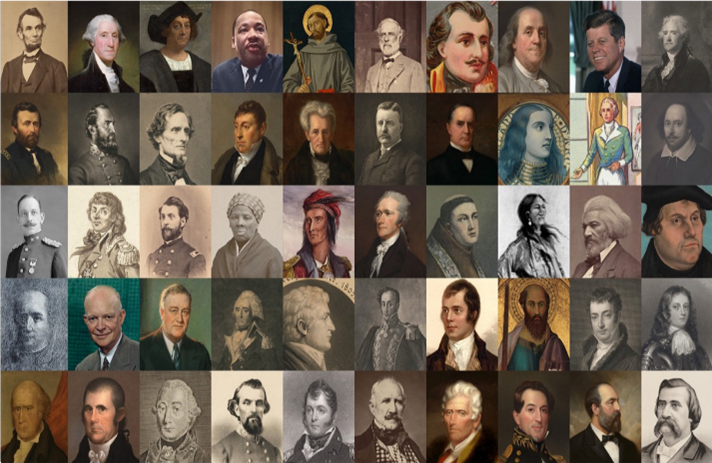4 Timing
Time the process to coincide with a confluence of interests that might contribute to its success.
POSSIBLE STRATEGIES
Know the community and its readiness for focusing on and implementing change (see Point 1, p. 5). Recognize that the climate will change (changes following the George Floyd killing and video, for example) and remain attentive to shifts in public sentiment.
Consider its effects on the level of anger and potential for violence, politics, power imbalances, and the willingness of public officials to engage in and support the work, especially noting their potential concerns, such as whether the process might undermine public support for their re-election and might be costly to implement and maintain.
ILLUSTRATIONS
Influence of an event
NPR reports that governments, institutions, and protestors removed 16 Confederate symbols in the entire year 2019. In contrast, these actors removed 59 symbols in the three months following George Floyd’s murder in 2020[1] and in total 160 were gone before the end of 2020.[2]
Choosing a prime time
In Philadelphia, Mississippi, where civil rights workers were murdered in 1964, some community members had been honoring the murdered people with marches and commemoration for years, but the media and local government largely ignored the murders and focused instead on the history related to white residents. The public attention surrounding a 1989 commemoration was not enough to counter the suppressed collective memory. But a community decision in 2004 to hold a commemoration created a sustained conversation and a commitment to continued commemorative work among local coalition members. The convergence of changes that produced a greater impact on public understanding of the murders in 2004 included lessons learned from the 1989 commemoration, state support, and a growing number of civil rights-era “cold cases” across the region.[3]
Prompting a public focus
In late 2021, the nonprofit Monument Lab published an audit of monuments, and its report received national media coverage.[4] They identified the 50 people most frequently depicted through public statues, noting that half enslaved others and that all but six were white men. Such news can sometimes change the public focus and prompt a desire for change.

Deep Dive: Pittsburgh, Pennsylvania
Timing decisions related to public symbols can influence whether a conflict escalates, stagnates, or moves toward resolution. The Pittsburgh case highlights how delayed action and unresolved legal questions can leave a contested symbol in limbo for years, making it harder for the community to move forward.
In Virginia, Governor Northam had just won the right to remove Richmond’s Robert E. Lee statue, with the Virginia Supreme Court ruling that old property agreements could not force the government to maintain monuments forever when the public policy reflected in them had changed. That 2021 ruling raised the hopes of Pittsburgh residents who thought their statue of Christopher Columbus should be replaced, and the city should instead celebrate those who built their city.
The controversy in Pittsburgh gained public attention in 2020, when protesters painted “Murder” across the base of the Schenley Park statue of Christopher Columbus.[5] As tensions heightened, the mayor, himself Italian-American, reflected two prominent varying views, saying, “Italian-Americans viewed [Columbus] with pride as they were being vilified and murdered. . . Today, those experiencing oppression in our country see him as a symbol of what divides us.”[6] The city began a process through its Arts Commission for hearing from the public, receiving over 5,000 public comments about the statue’s fate.[7]
When the Art Commission voted unanimously for removal, the Italian Sons and Daughters of America (ISDA) sued, pointing to a 1955 ordinance they said protected the statue.[8] The city’s lawyers cited the Virginia case, arguing that city government had the authority to remove monuments as “government speech.”
The Pennsylvania appeals court saw things differently. While the Virginia court had ruled that governments could remove monuments, it hadn’t given them “free rein” to ignore their own rules, the Pennsylvania court explained.[9] The Court noted that even Virginia’s courts had carefully analyzed old agreements before allowing removal. Pittsburgh couldn’t simply declare “government speech” and bypass its procedures.
As of June 2025, as the case continues through the appellate process, the 13-foot bronze Columbus statue remains in Schenley Park, wrapped in plastic. In the mayor’s final letter to the Commission, he noted that the decision would ultimately require finding ways to “celebrate Italian-American culture” while acknowledging broader community concerns.[10]
- Camila Domonoske, Report: 59 Confederate Symbols Removed Since George Floyd’s Death, NPR (Aug. 12, 2020), https:// www.npr.org/2020/08/12/901771780/report-59-confederate-symbols-removed-since-george-floyds-death. ↵
- Aaron Morrison, SPLC: At Least 160 Confederate Symbols Taken Down in 2020, Associated Press (Feb. 24, 2021), https:// apnews.com/article/at-least-160-confederate-symbols-removed-9a4d17b9728f15e6972b17f708e6a4b0. ↵
- See generally Claire Whitlinger, Between Remembrance and Repair: Commemorating Racial Violence in Philadelphia, Mississippi (unpublished paper, 2020). ↵
- Monument Lab, National Monument Audit, https://monumentlab.com/audit (last visited Nov. 6, 2021); Zachary Small, They’re White, Male and on Their Pedestals, for the Time Being, New York Times (Sept. 29, 2021) https://www.nytimes. com/2021/09/29/arts/design/National-Monument-Audit.html; Gillian Brockell, America’s 50,000 Monuments: More Mermaids than Congresswomen, More Confederates than Abolitionists, Washington Post (Oct. 6, 2021), https://www.washingtonpost.com/history/2021/10/06/public-monuments-audit-mermaids-confederates/. ↵
- Jade Campos, "Columbus statue in Schenley Park vandalized," Pittsburgh Post-Gazette, June 12, 2020, https://www.post-gazette.com/local/city/2020/06/12/christopher-columbus-statue-vandalized-pittsburgh-phipps-schenley-park/stories/202006120120. ↵
- David Aaro, "Pittsburgh park’s Christopher Columbus statue should go, arts panel decides," Fox News, October 30, 2020, https://www.foxnews.com/us/pittsburgh-parks-christopher-columbus-statue-should-go-arts-panel-decides. ↵
- Atiya Irvin-Mitchell, "Peduto recommends Columbus statue removal after Art Commission vote," PublicSource, October 9,2020, https://www.publicsource.org/pittsburgh-art-commission-votes-unanimously-to-remove-columbus-statue/. ↵
- Italian Sons and Daughters of America v. City of Pittsburgh and Mayor William Peduto, Pennsylvania Court of Common Pleas WL 13614754 (2020). ↵
- Italian Sons and Daughters of America v. City of Pittsburgh, 315 A.3d 217, 229 (2024). ↵
- City of Pittsburgh, Office of the Mayor, Letter RE Schenley Park's Christopher Columbus Statue, Mayor William Peduto, October 9, 2020, https://apps.pittsburghpa.gov/redtail/images/11662_Letter_to_Art_Commission_on_Christopher_Columbus.pdf. ↵
